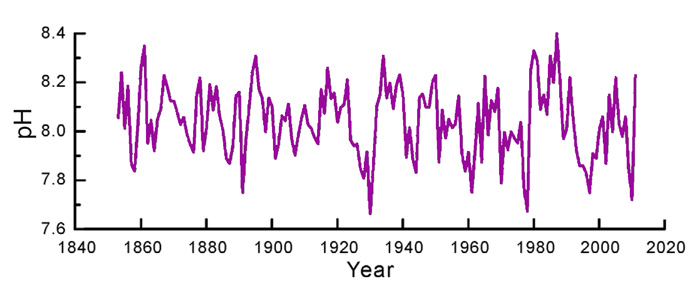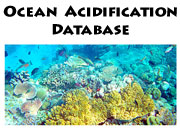| Tweet | Follow @co2science |
Paper Reviewed
Wei, G., Wang, Z., Ke, T., Liu, Y., Deng, W., Chen, X., Xu, J., Zeng, T. and Xie, L. 2015. Decadal variability in seawater pH in the West Pacific: Evidence from coral δ11B records. Journal of Geophysical Research: Oceans 120: 7166-7181.
In environmental extremist circles, ocean acidification is known as one of the twin evils of rising atmospheric CO2 concentrations (the other being global warming). The concern is that as more and more carbon dioxide dissolves into the surface waters of the world's oceans, the pH values of the planet's oceanic waters will decline to such a degree that great harm -- and possibly death -- will be inflicted upon vast quantities of marine life in the decades and centuries to come. As a result, many are calling for immediate reductions in CO2 emissions so as to avoid these potential outcomes.
However, much remains to be discovered and learned about ocean acidification before any policy-related actions to address it are implemented, including a basic understanding of the natural variability of oceanic pH and its impacts on marine life across space and time. Such understanding is essential in order to prepare realistic projections of future oceanic pH, as well as the impacts of those projections on marine life. Unfortunately, as reported by Wei et al. (2015), "seawater pH has seldom been recorded owing to the nonroutine nature of its measurement, and thus continuous long-term seawater pH records are scare." As a result, the team of nine researchers from the Chinese Academy of Sciences states that "very little is known about regional variability in ocean acidification on decadal to centennial time-scales, especially since the industrial era."
Hoping to add at least some insight into the dearth of knowledge surrounding historic pH trends, Wei et al. set out to develop an annually-resolved long-term seawater pH record for the region of the northern South China Sea. The resulting 159-year long record, covering the period 1853-2011, was constructed from the δ11B of a Porites coral growing in Longwan Bay, 2 km off the east coast of Hainan Island (19.29°N, 110.66°E). And what did it reveal?
As shown in the figure below, Wei et al. note their seawater pH reconstruction reveals the presence of large decadal-scale variability, with significant periodicities at approximately 18 and 5.6 years as revealed by power spectral analysis. The mean pH over the 159-year period was 8.04 and annual pH values ranged from 7.66 to 8.40. Additionally, they report an insignificant linear trend in the data of -0.00039 ± 0.00025 pH unit per year, amounting to a decline of 0.062 pH unit across the length of the record.

Figure 1. Reconstructed pH values for the northern South China Sea over the period 1853-2011. Adapted from Wei et al. (2015).
Several important points can be made in regard to Wei et al.'s reconstruction. First, model-based reconstructions have calculated a theoretical 0.1 pH drop in oceanic seawaters in response to the CO2 that has been emitted into the atmosphere since pre-industrial times, which value is approximately four-tenths larger than the 0.062 pH unit decline Wei et al. obtained from real-world data. This suggests the models may well be overestimating the amount of CO2 that is being dissolved into the oceans and thus inflating the potential impacts of so-called ocean acidification. Second, it is clear from viewing Figure 1 that there are numerous natural swings in pH that occur over relatively short time intervals (1-3 years) in which the pH either rises or falls by more than 0.3 unit. Indeed, it is not uncommon for the pH to rise or fall by twice this amount over a period of 1 to 2 years to a decade. The significance of this second point is noted in the fact that marine life is clearly able to survive and thrive under natural swings in oceanic pH over the course of two or three year periods that are twice as large as the pH decline that is predicted to occur by theoretical models over the course of the next century. The fact that they can successfully endure these rapidly recurring events in so short a time interval gives considerable pause to alarmist concerns that they can't endure or adapt to the much smaller pH change predicted to occur over the next century or more.
Posted 17 March 2016



